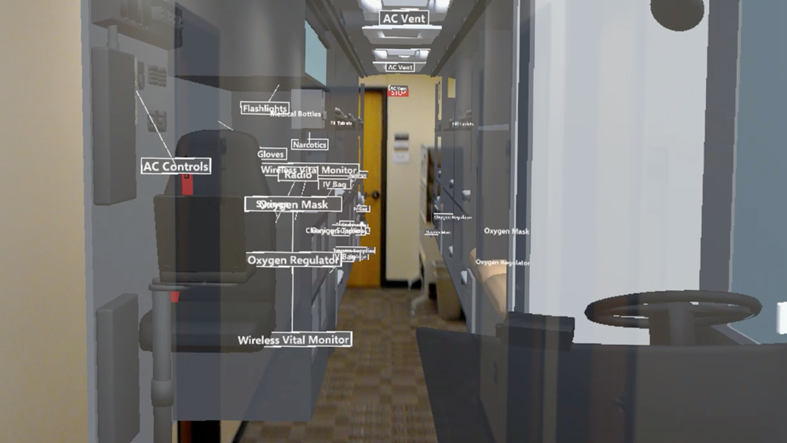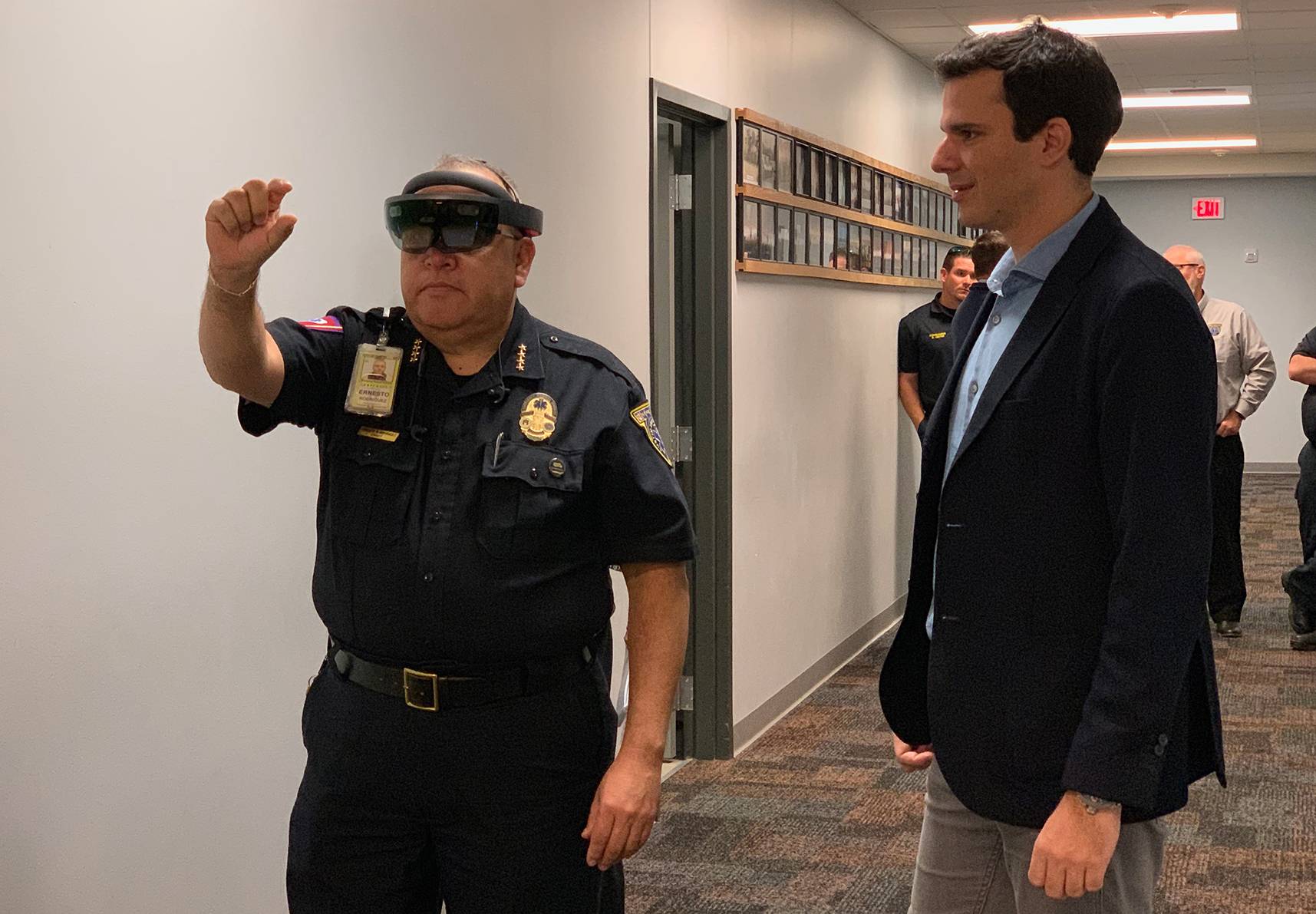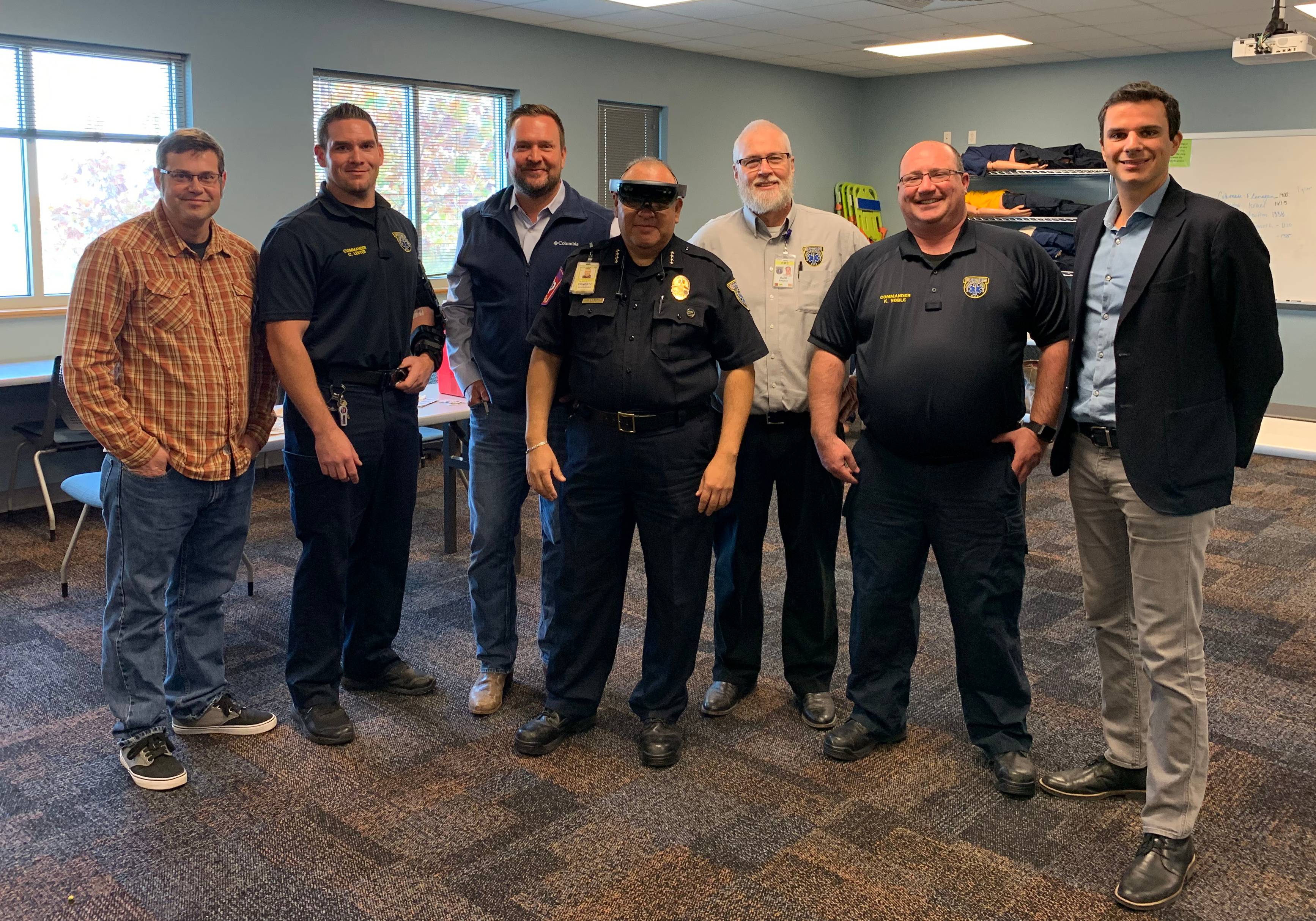Texas State partners on virtual reality training for first responders
Julie Cooper | January 8, 2019


An interdisciplinary team of Texas State faculty and students are helping to take first responders to the next level using augmented reality (AR) and virtual reality (VR) training in what is called Just-in-Time Reality Training.
On Nov. 28, key members of the Austin/Travis County EMS got to experience VR training for the Ambus Emergency Medical Service at the Austin Fire Academy. Ambus is a 20-bed ambulance that first responders use during large-scale disasters with mass casualties. There are 13 Ambuses in the state and annual training for up to 80 EMS personnel can cost more than $80,000. The VR training not only cuts costs, but the time it takes to complete the training.
Putting on the headset, Austin EMS Chief Ernesto Rodriguez saw the interior of the Ambus as he walked the length of a hallway. He opened and closed the fingers on one hand to open and close drawers on the Ambus. Koutitas then instructed the chief to locate various medical supplies. The chief was also asked to describe what he was seeing: “I am looking at the bus, I see A/C controls, and oxygen masks,” he said.
Austin/Travis County EMS Commander Keith Noble said he initially received a $4,000 grant to develop training materials. This eventually led to his partnering with Texas State to develop the training system.
With AR, the designers have recreated the interior of the AMBUS, down to the exact number of steps an EMT would take to find supplies within the bus. In explaining how VR and AR differ, Koutitas says: “In AR you see a virtual environment, but it is overlaid with physical environment or space. In VR you cannot interact.
“Putting a VR headset over your eyes will leave you blind to the current world, but will expand your senses with experiences within,” he said. “Augmented reality, however, takes our current reality and adds something to it. It does not move us elsewhere.”
The Texas State team will next be taking the training system to Austin’s SXSW in March and upcoming EMT/EMS conferences in the U.S.

Share this article
For more information, contact University Communications:Jayme Blaschke, 512-245-2555 Sandy Pantlik, 512-245-2922 |